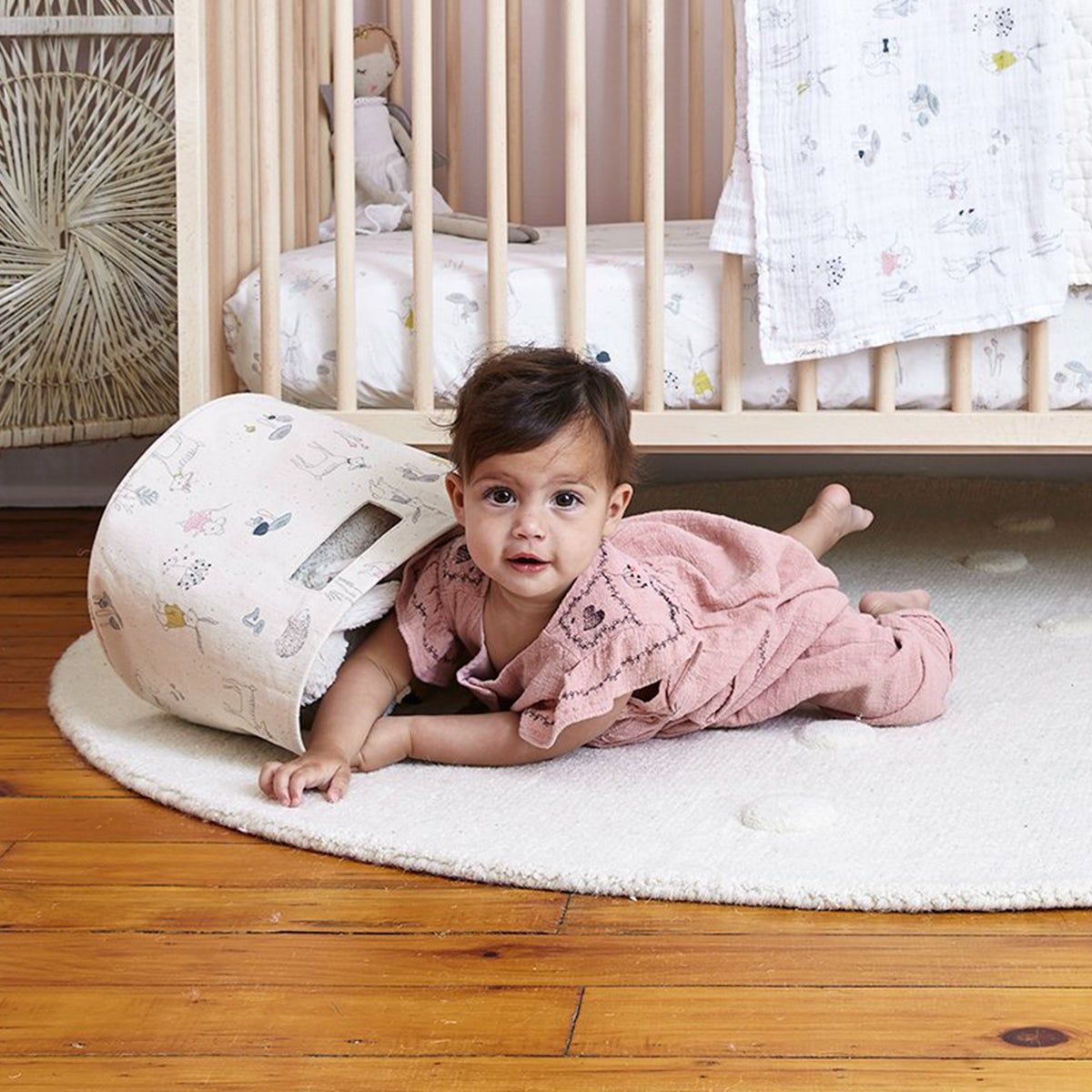
Ask An Expert
When Do Babies Start to Crawl & What to Do
- Written By
- Marnie Schwartz
When babies start crawling
First things first, remember that every baby is different, says Dr. Orajiaka. So if your niece or nephew is crawling at six months and your 9-month-old isn’t yet, that’s not necessarily a problem. That said, most healthy babies who were born full-term start crawling between seven and 10 months, she says. But some babies never crawl at all, and go straight to pulling up to stand. As long as your baby has coordinated movements on each side of the body, that’s totally fine. If your baby isn’t moving around at all by 10 or 11 months—no scooting, crawling, belly rolling, etc.—or if you notice that they’re only trying to move one side of their body, ask your pediatrician for an evaluation to find out why, she says.
How babies learn to crawl
Crawling doesn’t just happen on it’s own. The skills your baby has been developing since birth, like sitting and rolling, all build on each other. For example, when they start sitting, babies support themselves (and catch themselves when they fall) using their arms, which builds the strength to push forward. Once they recognize that they have this ability to push up, a baby will often realize they can kick their legs back to lay on the floor, says Dr. Orajiaka. If their knees and lower legs aren’t yet strong enough to push up on, you might see your baby moving their arms and dragging their belly and legs behind.
How to encourage your baby to crawl
You don’t need to “teach” your baby to crawl. But it doesn’t hurt to do activities that help them build the strength and coordination to work toward this step. “Tummy time helps,” says Dr. Orajiaka, who advises starting it early (and always supervised). Spending time on their bellies helps them build strength and get used to being on the floor. You can also put age-appropriate toys out during tummy time—and place them just beyond baby’s reach. If you set out obstacles, like pillows or boxes, your baby may be inspired to try crawling around them. Activity gyms also help babies practice reaching with their arms, and help them develop the ability to raise their heads and necks.
Essential babyproofing for crawlers
Don’t wait until you have a crawler to babyproof, says Dr. Orajiaka. “They progress so fast, and you get busy.” She advises getting down on all fours and crawling around your home to see what dangers your baby might encounter. Here are some she suggests watching out for:
Cribs, beds, and couches: “Babies can go from rolling to crawling fast,” says Dr. Orajiaka. If a baby can crawl, they can pull up on a crib rail and fall out. So once your baby is trying to roll, make sure to drop the crib to its lowest setting if you haven’t already. (And if they’re in a bassinet, move them to a crib, stat.) Crawlers and rollers can also easily fall off of adult beds and couches.
Stairs: Babies are fascinated and excited by stairs. If crawling seems imminent, it’s time to install baby gates so they don’t fall down the stairs.
Heavy furniture: Once your baby is crawling, they’ll move themselves to things like dressers and bookshelves, and soon start trying to pull up. Furniture can topple down on them, so make sure to anchor it. And if you have a tablecloth on your table, make sure it isn't hanging within reach. A baby can pull on it and cause everything on the table (including hot food) to come crashing down.
Small objects: Babies can swallow and/or choke on small items they find on the floor while crawling around. If there are older siblings, make sure to put their toys, which may have small pieces, on a separate, higher shelf out of baby’s reach.
Low cabinets: If your cleaning supplies are under the kitchen or bathroom sink, make sure those cabinets are secured or move the contents to a higher shelf. Same goes for spices.
Trash: An open trash can is exciting to a baby, who will want to put their hands in and take everything out.
Toilets: Babies can pull up to a toilet, fall in, and drown. Keep bathroom doors closed or use a lid-locking device.
Laundry machines: Keep your washing machine closed! People focus on the detergent as a potential hazard, but if you have a front loading machine close to the ground, babies can get into it and be in danger, says Dr. Orajiaka.
Whether they’re scooting, rolling, army crawling, or full-on crawling, your baby learning how to get from one place to another on their own is exciting (and, let’s be honest, exhausting). Make it an easier transition for everyone and get ready before your little one is on the move.